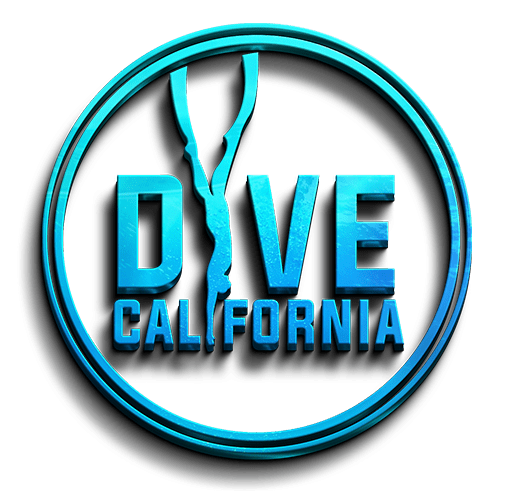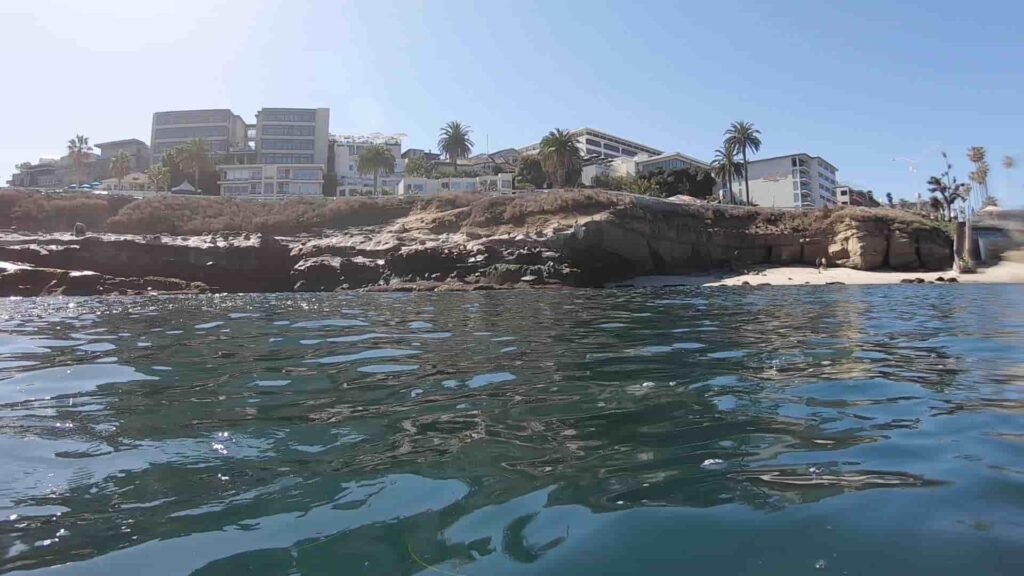
La Jolla Cove Scuba Diving
Guided Dives at La Jolla Cove

La Jolla Cove is San Diego’s most famous dive site! It’s one of the few places in California where you can access giant kelp beds, rocky reefs, and sea caves all from a single beach entry. Plus, it’s one of the best places in California to dive with sea lions.

Let’s discuss all the reasons why you should go scuba diving at La Jolla Cove, and share a few tips for divers who are visiting for the first time.
Dive Right In: Conservation at The Cove | What You’ll Explore | Marine Life | Diving Tips
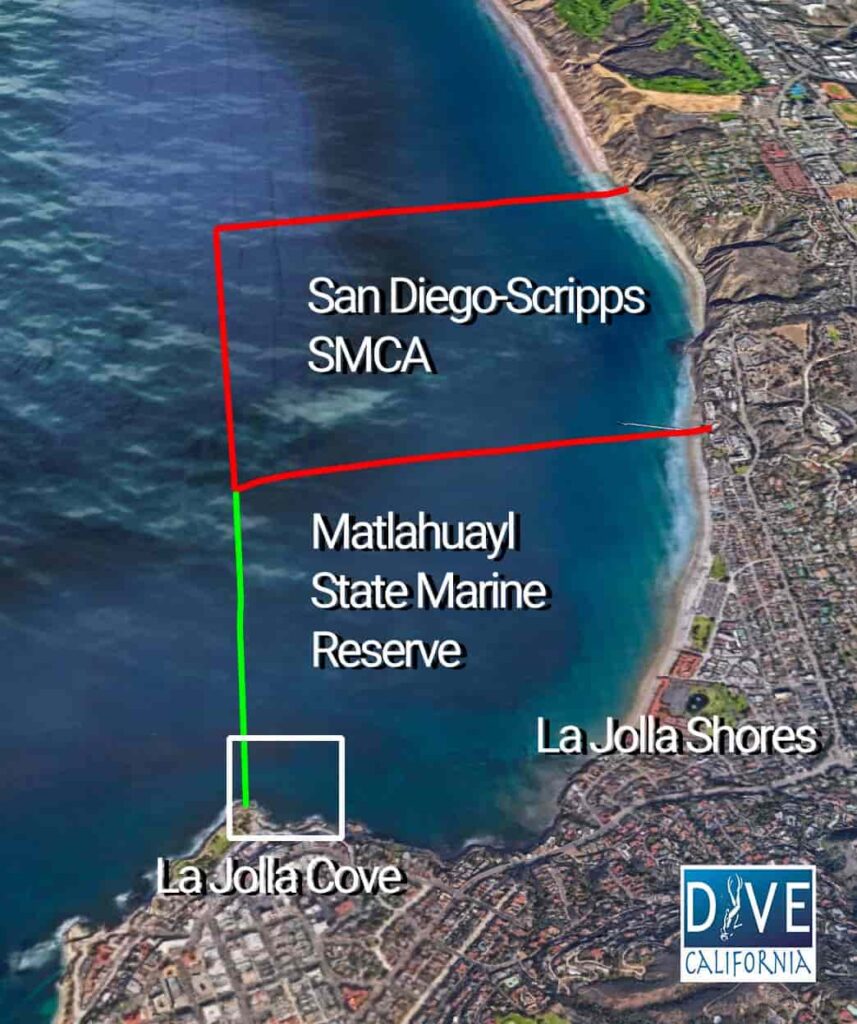
Marine Conservation at La Jolla Cove
La Jolla Cove has been protected since 1929! Decades of conservation efforts have made this a dive site that’s flourishing with marine life.
The Cove is part of the Matlahuayl State Marine Reserve (previously known as the San Diego-La Jolla Underwater Park), a protected area that encompasses the waters in and around La Jolla Cove. It’s basically a state park that’s underwater.
The name “Matlahuayl” (pronounced “mot-la-hoo-uhl”) is a tribute to the Kumeyaay tribes that used to live here. They called La Jolla, mat kulaaxuuy, or, land of holes. That’s probably referring to the La Jolla sea caves!
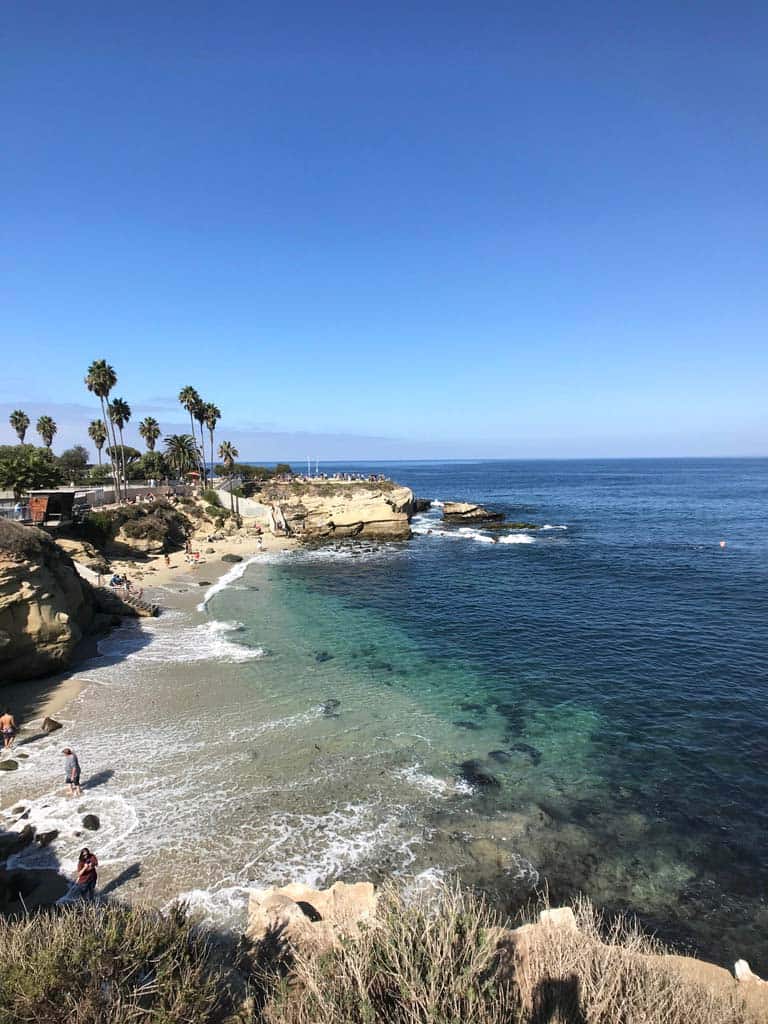
Within the boundaries of Matlahuayl, no one is allowed to hunt or capture marine life of any kind. No commercial or recreational fishing is allowed, and no spearfishing.
Visitors are also prohibited from taking “geological” items. That means you’re not allowed to remove any shells or rocks from the cove.
Matlahuayl is not the only marine sanctuary in La Jolla. There are two adjacent conservation areas to the north and south. Together, they create a safe passageway for animals and allow marine life to flow more naturally.
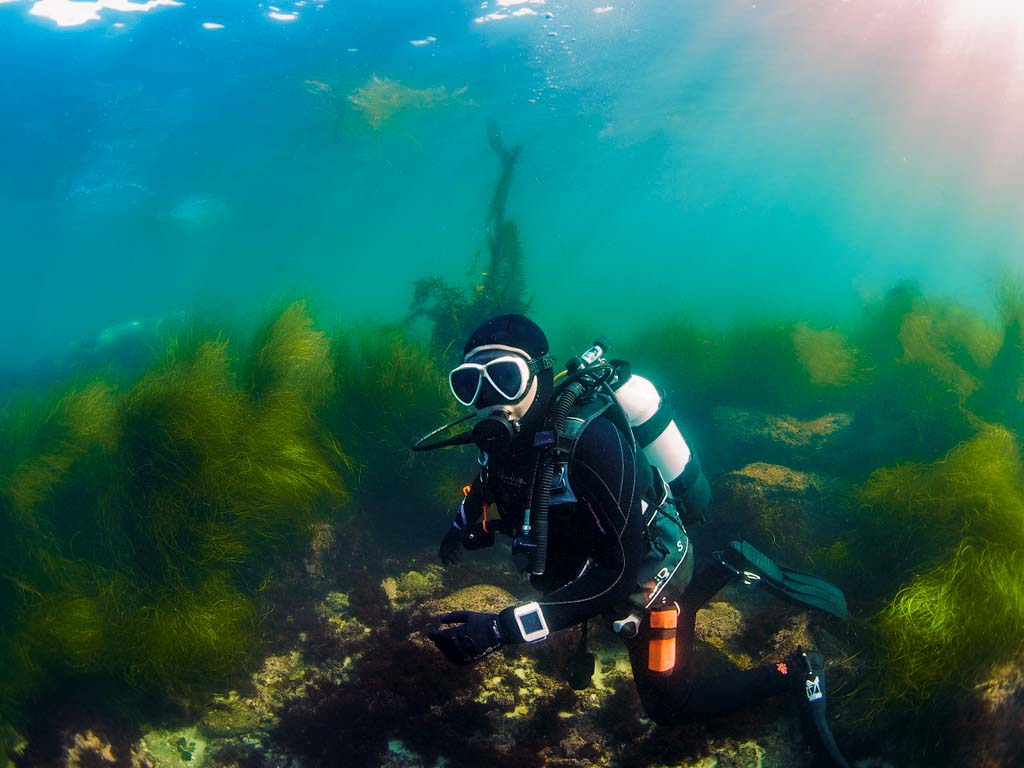
La Jolla Cove: Dive Site Features
What kind of diving can you expect at La Jolla Cove?
The Cove has four main habitats: the seagrass meadow, the kelp beds, the reefs, and the sea caves.

Seagrass Meadow
The shallowest part of La Jolla Cove is a seagrass meadow, where you’ll find beds of surfgrass and eelgrass. Surfgrass clings to underwater rock, while eelgrass tends to grow in the sand or mud. It’s lovely to watch the seagrasses billow back and forth in the surf.
When you’re diving the seagrass meadow, be sure to look out for invertebrates, like nudibranchs and sea stars. You may also find baby and juvenile fish here. Younger fish swim and feed in the seagrass meadow until they grow large enough to survive in larger reefs.
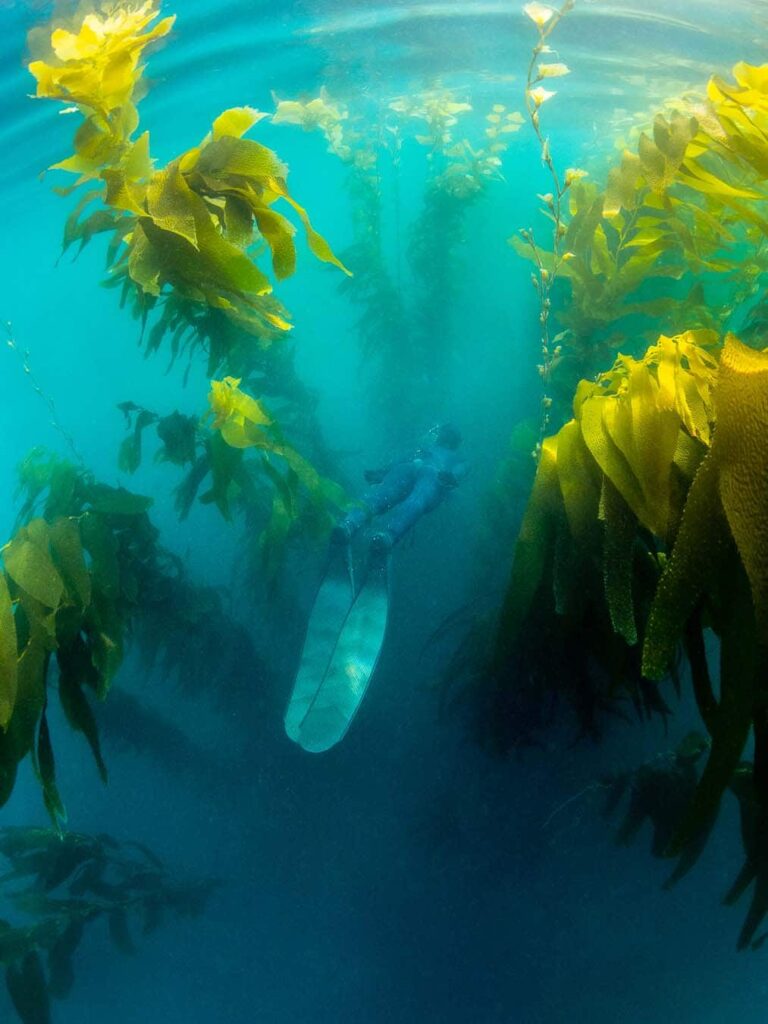
Kelp Beds
Most divers come to California for the kelp forests.
The La Jolla Kelp Forest is formed by an expansive bed of giant kelp. The giant kelp rise all the way to the surface from the rocky bottom, forming an underwater forest you can swim through.
You can find plenty of fish, sharks, and pinnipeds in the kelp forest, but the real star is the giant kelp! The kelp beds feel enormous and otherworldly. Underwater photographers will love to capture the dazzling interplay of light and shadow. There’s no other experience like it.
Although California’s kelp forests have declined dramatically in the last 20 years, the kelp bed at La Jolla is among the largest and healthiest in Southern California.
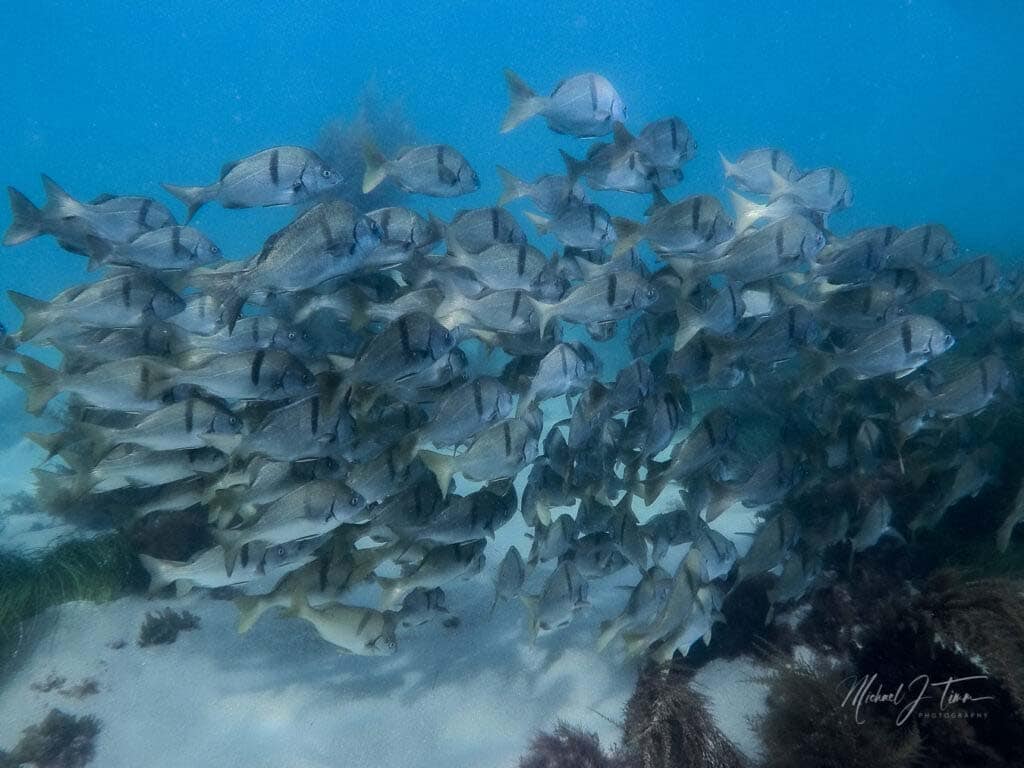
Reefs
La Jolla Cove has shallow rock reefs that are covered in algae and seagrass. You can find a variety of fish and invertebrates hiding in the crevices, socializing, and tending to nests. It’s not uncommon to find eels, stingrays, and horn sharks.
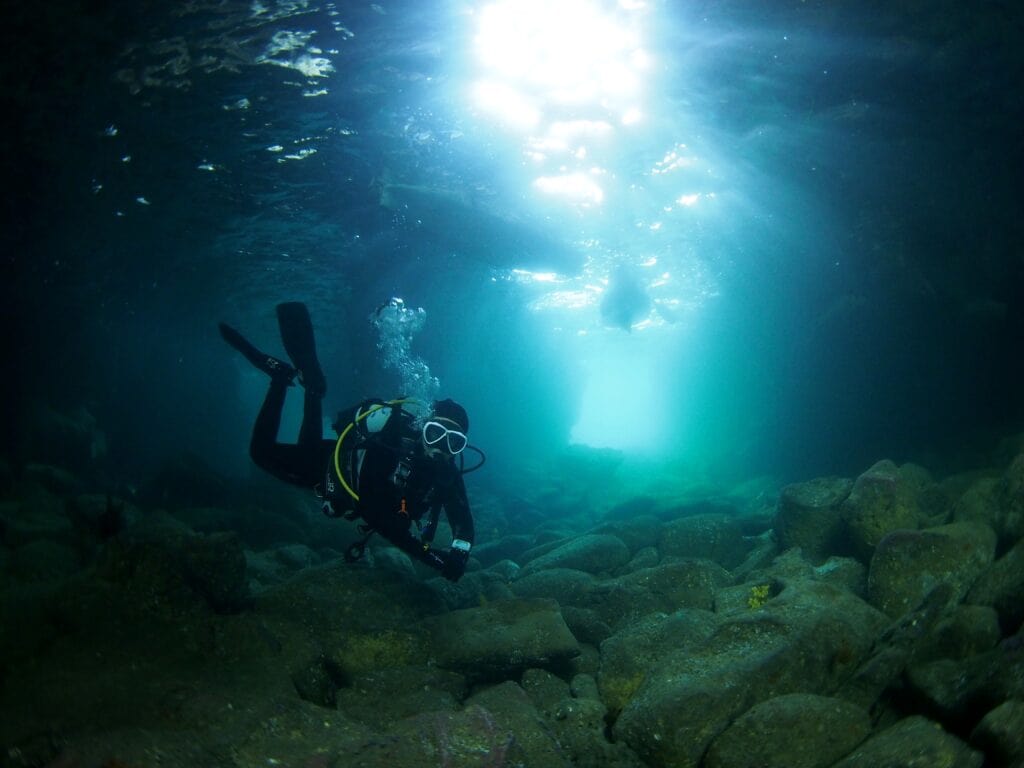
Sea Caves
The “Seven Caves” are popular with snorkelers and kayakers, but scuba diving is the best way to explore them.
On calm days, scuba divers can explore a variety of swim-throughs that barrel through the rock. You can pop up inside a spacious grotto, with sea lion pups swimming alongside you.
Don’t let the term, “sea caves” intimidate you! The caves are mostly shallow and feature big, open-air chambers where you can surface. Be sure to dive this area with a guide if you’re exploring for the first time.

La Jolla Cove Marine Life
What kind of marine life can you find at La Jolla Cove?
The Cove provides food and shelter for a variety of underwater creatures, including fish, mammals, and invertebrates. Occasionally there are visitors from deeper water, like the broadnose sevengill shark.
There are too many species to list, but here are the most popular / commonly seen wildlife at La Jolla Cove:

Fish
- Garibaldi
- California Sheephead
- Kelp Bass
- Opaleye
- Sargo
- Surfperch
- Blacksmith
- Señorita
- California Moray Eel

Sharks and Rays
- Horn Shark
- Leopard Shark
- Broadnose Sevengill Shark
- Round Stingray
- Banded Guitarfish
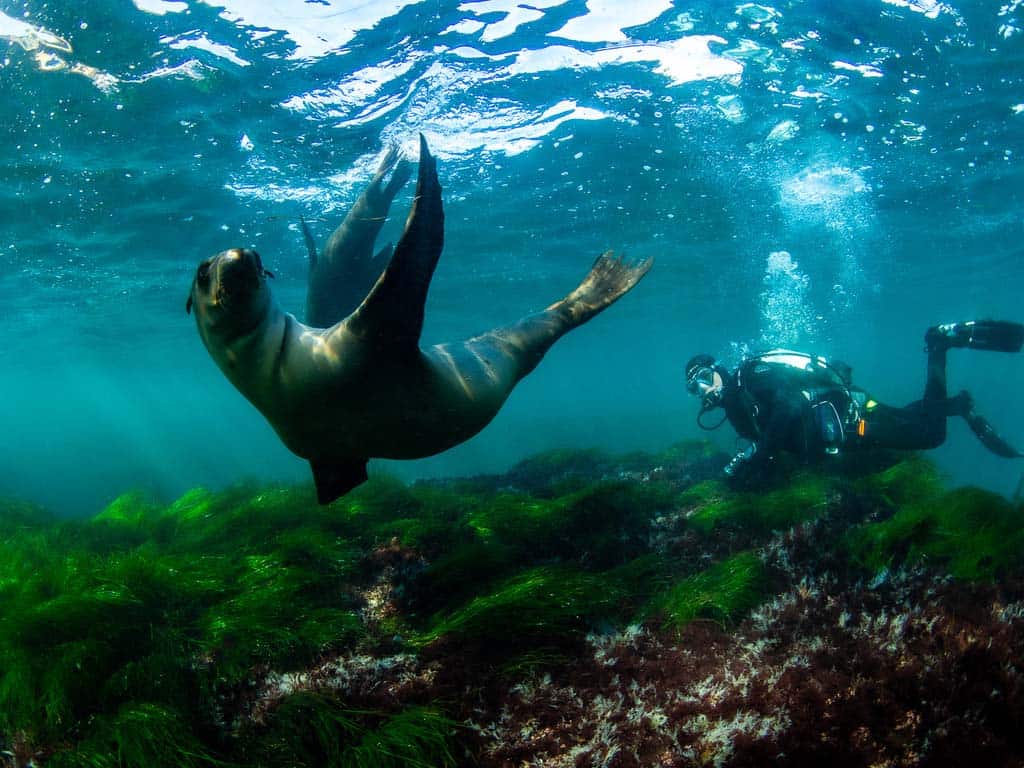
Marine Mammals
- California Sea Lion
- Harbor Seal
- Green Sea Turtle

Marine Birds
- Brown Pelican
- Brandt’s Cormorant
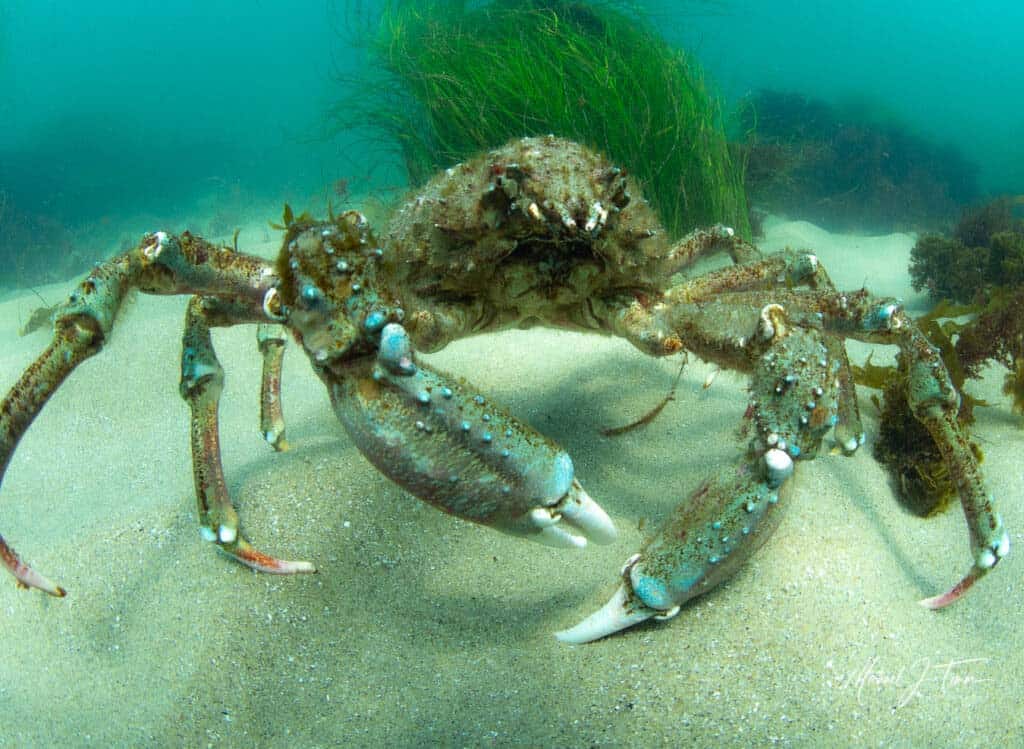
Invertebrates
- California Spiny Lobster
- Sheep Crab
- Norris’s Top Snail (“kelp snail”)
- Ochre Sea Star
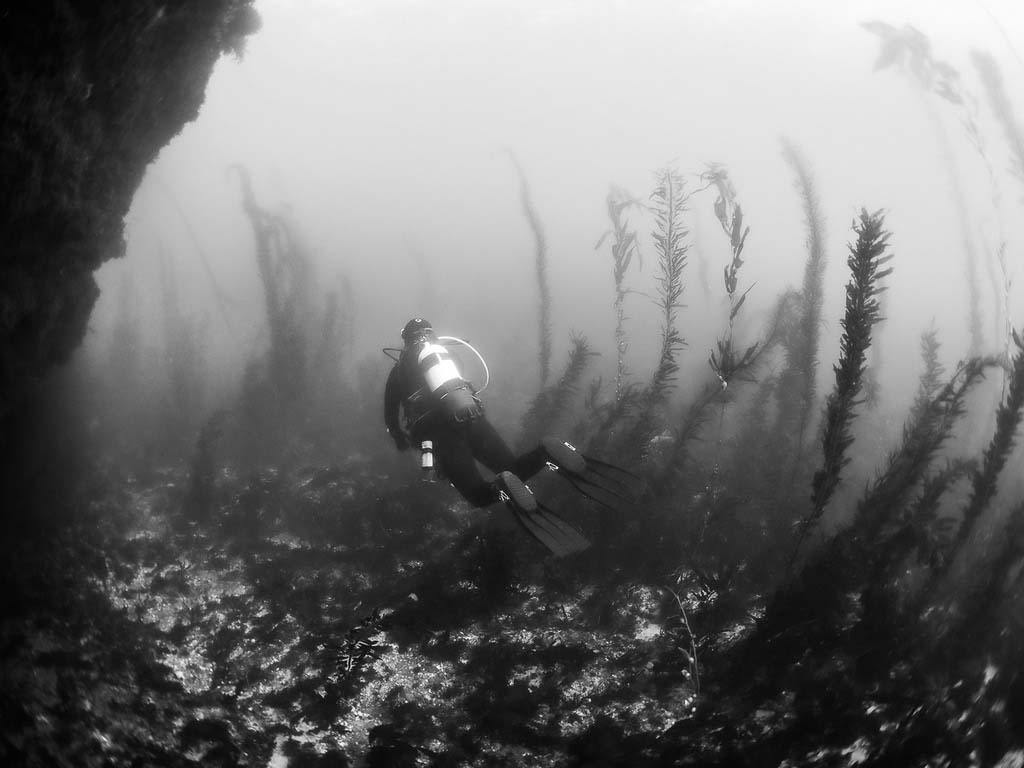
Algae and Seagrass
- Braided Hair Algae
- Giant Kelp
- Feather Boa Kelp
- Surfgrass
- Eelgrass
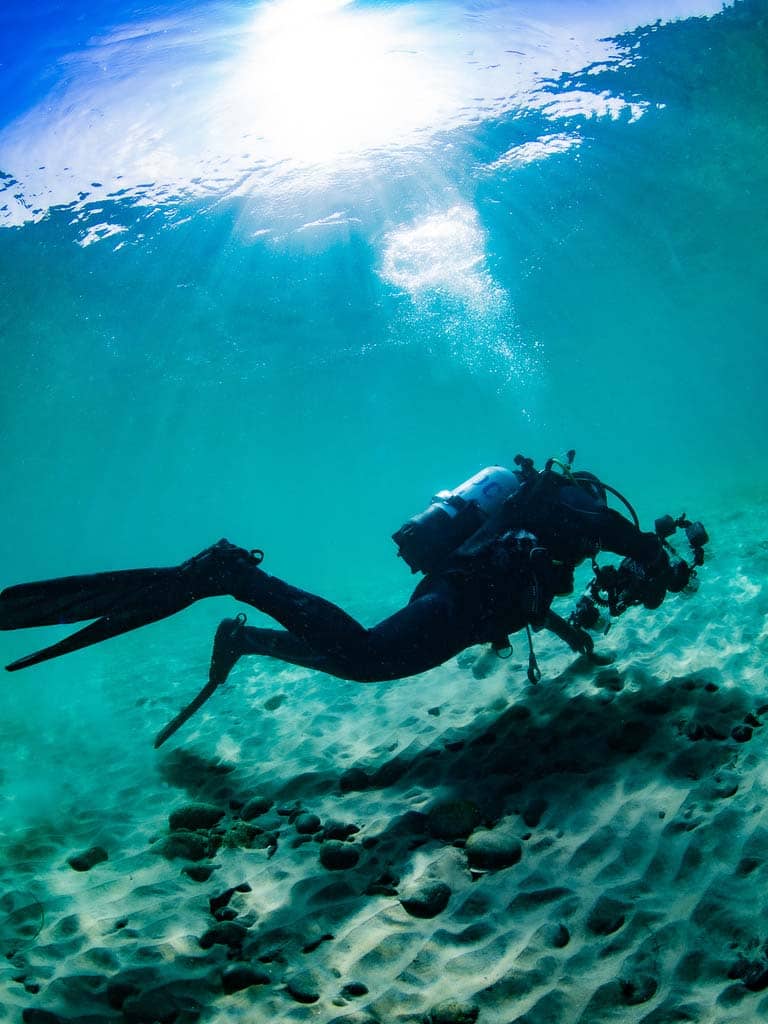
Diving at La Jolla Cove
If you’ve never been diving in California, here’s something important to remember: California diving is not like tropical diving.
In other words, it’s not like the diving on your Caribbean vacation or South Pacific adventure.
California has a “temperate water” ecosystem, which means that the water is cooler and visibility is often less than 30 feet.
Make no mistake—California has wonderful diving! You can find animals and habitats in California that you won’t find anywhere else. But if you’ve only ever dived in the tropics, you’ll want to know a few key things before you dive in.
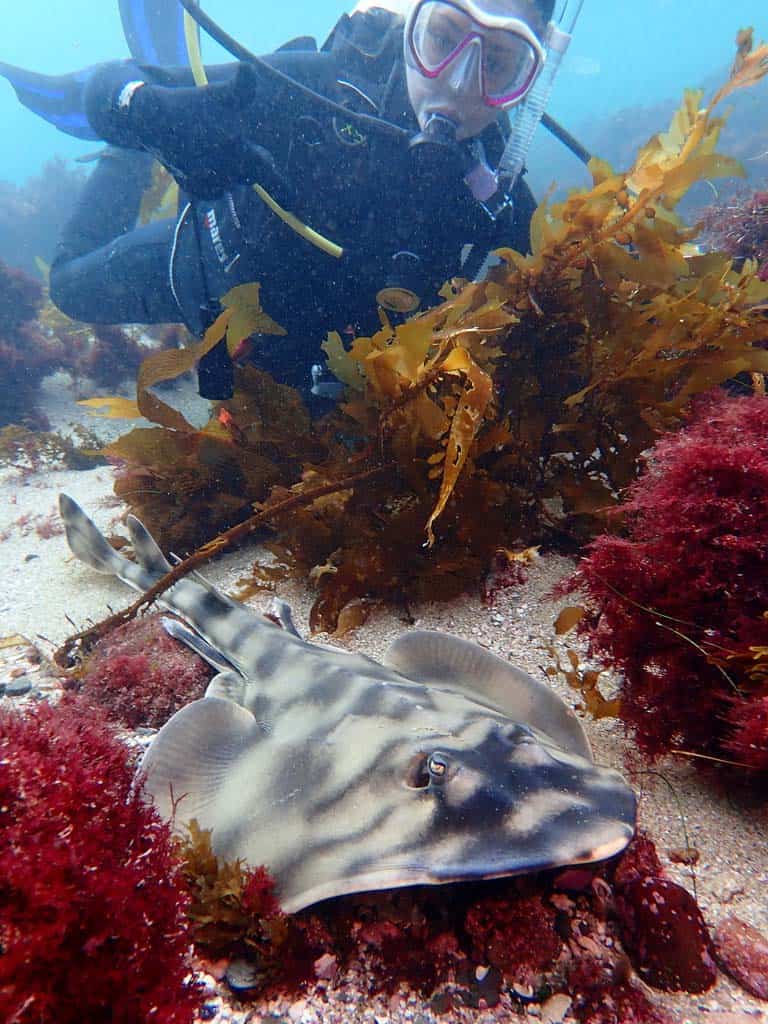
Water Temperature
For most divers, California is considered “cold water diving.” Of course, everyone has a different definition of what’s “cold.”
On average, the water temperature in La Jolla Cove is 63°F.
Throughout the year, the water temperature generally ranges from 53°F/12°C to 66°F/19°C. During the summer months, the water may reach 78° F/25°C.
The water is warmest in the Fall, from September through November. The water is coldest in the winter and early spring.
Nearly all California divers wear a 7mm wetsuit with a hood and gloves. However, some San Diego divers wear drysuits.
If you’re nervous about diving in cold water, consider visiting during the summer months when the air temperature is very warm. Although the water will still be cool, the warm air will make you a lot more comfortable before and after the dive.
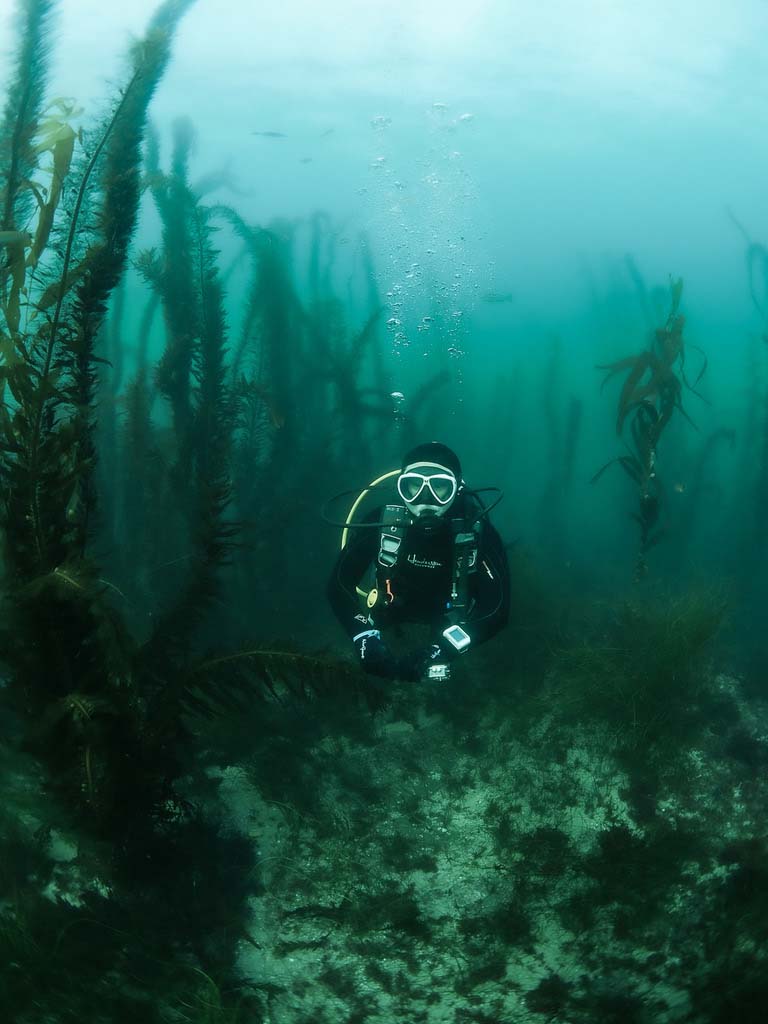
Visibility
Visibility can be very limited depending on the time of year. The cold water in San Diego is full of nutrients and microorganisms, which cloud up the water and reduce visibility. Strong surf can also cause poor visibility by stirring up silt and sand.
On average, the visibility ranges from 10 to 20 feet. On its best days, the visibility can reach 30 or 40 feet.
Visibility can also change rapidly over the course of a single dive. On some days, you may start the dive with 20-foot visibility, and finish the dive with 10 feet or less.
The unpredictable visibility can make it difficult to navigate La Jolla Cove if you’re unfamiliar with its underwater landscape or if you’re not proficient with a compass.
Surf Conditions
There’s often light to moderate surge at La Jolla Cove. The surge isn’t inherently dangerous, but you should take caution if you’ve never dived this site before. There are rock outcroppings that are hidden just inches beneath the water, and if you’re not careful then a large swell could push you against them or on top of them. The sea caves can also be dangerous if you don’t have any experience diving them, especially when there’s a moderate surge.
Consider diving with a qualified guide if it’s your first time exploring La Jolla Cove. Here at Dive California, we’ve been leading guided dives at La Jolla Cove for well over a decade.
Our experienced dive guides can:
- Help you safely and efficiently manage the surge
- Safely navigate around the underwater bluffs
- Take you into the swim-throughs at the Seven Caves
Plus, a guide can point out animals that are hiding or difficult to spot!

